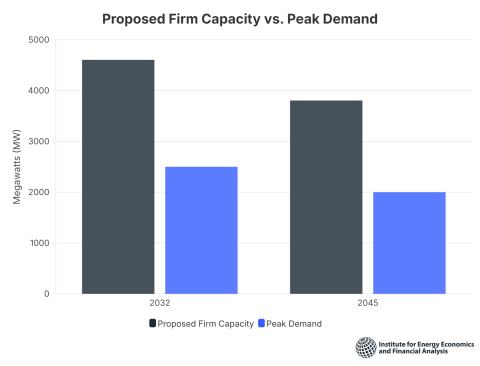Fossil fuel investments: Looking backwards may prove costly to investors in today’s market
Download Full Report
Key Findings
Oil and gas sector goes from 29% of the S&P 500 in 1980 to 5.3% in 2018, the lowest in more than 40 years.
Advisors and fiduciaries who point to past performance as the basis for continued investment in fossil fuels need to take a refresher course.
Executive Summary
The powerful fossil fuel industry continues its steady decline as evidenced by: Its last-in-class S&P position in 2018, a decade of lagging stock market performance, fewer institutional investors, depressed profits and a weak outlook.
Given the underwhelming performance of oil and gas stocks over the past decade, fiduciaries and money managers should be leading their investment pitches with fossil-free funds, only offering traditional indexes if pressed by clients, according to analyses by the Institute for Energy Economics and Financial Analysis (IEEFA).
A close look at the data over time makes it plain that meeting investment targets with fossil-free funds has become technically simpler—and financially more lucrative—over the past decade.
Last year, after almost three years of rising oil prices, the oil and gas sector placed dead last in the S&P 500. This follows a ten-year trend of lagging in the market. The industry’s fall has been long in the making. In 1980, the industry claimed 29% of the S&P 500. Today, it only occupies 5.3%, the lowest level in more than 40 years. During the latter part of the last thirty years, the sector remained an important component of fund portfolios even as market support for the industry eroded.
For investment advisors and fiduciaries that continue to hold oil and gas stocks, it is a much smaller task to reallocate 5% of an investment portfolio than 29%. It also becomes less painful when the poor sector performance is acknowledged. The sector has underperformed in the stock market for a decade and continues to perform poorly and offer little in terms of a value proposition going forward. Finding alternatives to fossil fuel companies will not be difficult—every other sector in the economy is growing faster, smarter and healthier.
Press release: IEEFA: Canada’s major banks continue funding oil and gas companies despite growing concerns over decommissioning liabilities
Please view full report PDF for references and sources.















